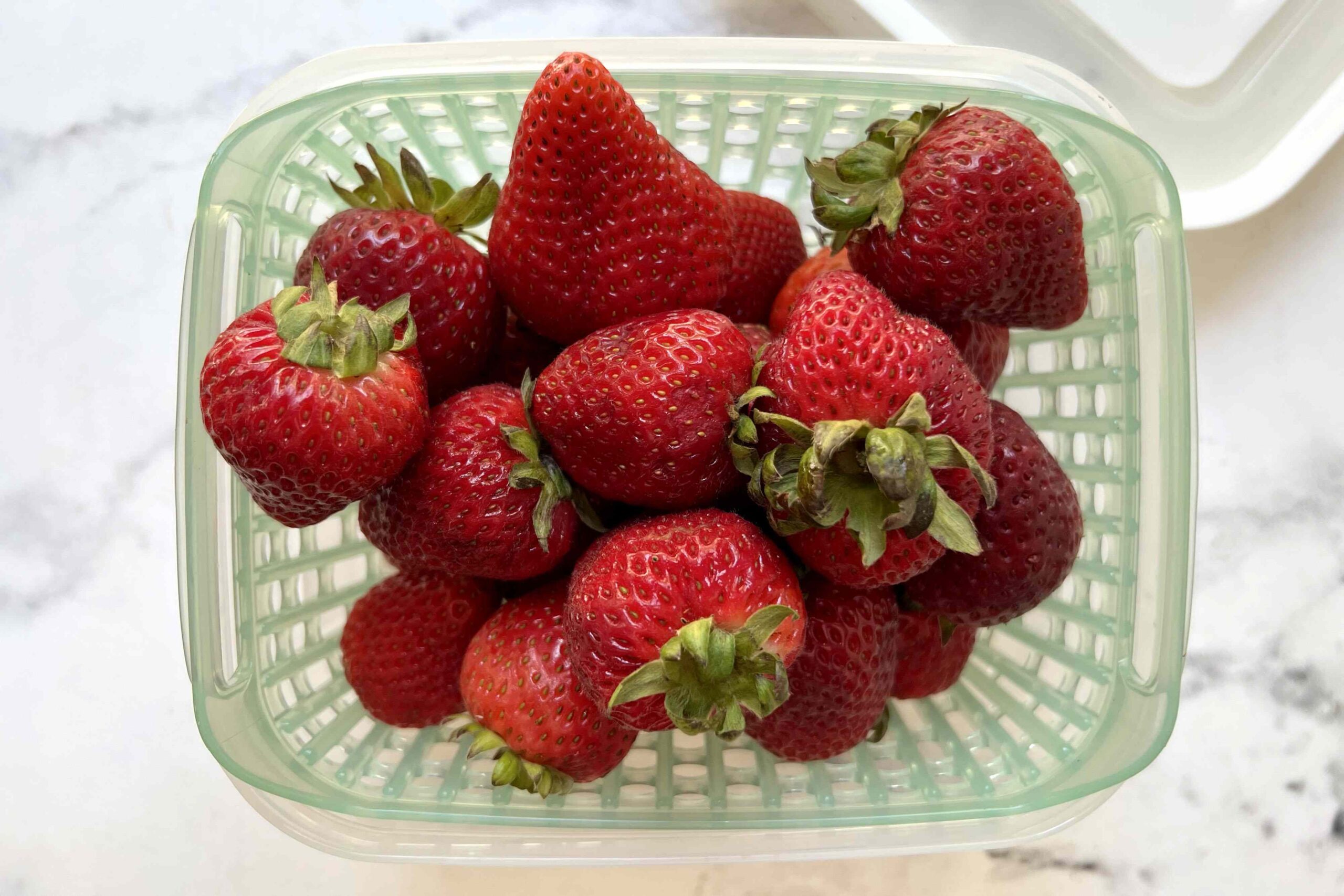:max_bytes(150000):strip_icc():format(jpeg)/We-Tried-X-Ways-to-Store-Strawberries-FT-BLOG0725-Unwashedinberrykeeper-840a4ed488a34fb8894e5f1c85564258.jpeg)
Whether you love strawberries for their potent nutritional benefits or their lovely sweet-tart-juicy flavor and irresistible fragrance (or both!), you want to make the most of the ones you buy and bring home. That means storing them so that they don’t go bad. We’ve all been there — they look fine from the outside of the package, but you open it up and find white, fuzzy mold on the berries in the middle. What a waste of money.
To determine the best way to store them so they stay at peak freshness for as long as possible, I tested seven methods side by side. This assignment was quite objective — I simply reported on which methods kept my berries fresh for the longest amount of time. The results were clear, with two methods clearly beating the rest.
How I tested
- Strawberries: I chose one-pound containers of conventional (not organic) strawberries in breathable plastic clamshell packaging. I purchased them all at the same store, and was told by the produce manager that they were all from the same shipment. At the store, I turned all of the packages upside down to make sure that no berries stuck together. When I got home, I went through each container to make sure none of the berries were already spoiled.
- Environment: I stored all of the berries in the refrigerator. I used my extra fridge in the basement, one that sees less traffic than my primary refrigerator. A thermometer confirmed that the temperature inside this fridge was 38°F.
- Criteria: The main quality I looked for here was longevity — which method kept the berries at peak condition the longest.
- Timing: I had 10 days in which to test — from the time I started the assignment until I needed to submit my draft. I checked on the berries twice each day: once in the morning and once at night.
The best way to store strawberries: unwashed in their original packaging lined with paper towels
Ann Taylor Pittman
To test this method, I gently removed the berries from their clamshell packaging, then lined the container with paper towels on the bottom and up the sides. I loaded the berries back into the container and placed a piece of paper towel on top.
At the nine-day mark, these berries just started to show signs of age, looking a little dry on the surface. At 10 days, they were mostly bright and smooth but with a teensy bit of shriveling. They tasted delicious — sweet, juicy, and firm — but they needed to get used up that day. This quick and easy method resulted in berries that outlasted all the others.
Runner-up method: unwashed in an airtight container lined with paper towels
Ann Taylor Pittman
The airtight container here allowed for more moisture to build up, but the paper towels absorbed most of it. The berries remained bright, smooth, and delicious for a full eight days.
The worst method I tried: washed in a vinegar bath, dried, and stored in a colander
Ann Taylor Pittman
For this test, I used a solution of three parts water and one part white vinegar to soak the berries for five minutes. I then dried the berries thoroughly on a clean kitchen towel, and placed them in a colander to store them. OK, admission: I used the insert for my salad spinner because I could not find my colander, only mesh strainers (I choose to believe my college-aged boys took it, though it’s highly likely that I lost it). I placed a paper towel on top of the berries and placed the container in the fridge. This method simply allowed for too much airflow. The berries were dried up and leathery at the four-day mark.
The full list of methods I tested, from highest to lowest ranked
- Unwashed in original packaging lined with paper towels (see above)
- Unwashed in an airtight container lined with paper towels (see above)
- Unwashed in a berry keeper: They stayed fresh for as long as the berries in method 2, but this method requires you to purchase specialized equipment.
- Washed in vinegar bath, dried, and stored in an airtight container: The berries got a little slimy at the seven-day mark. (Lining with a paper towel would keep them fresher longer.)
- Unwashed in an airtight container: They were a little slimy at the seven-day mark, with a slightly fermented taste.
- Unwashed in original packaging: The berries were starting to shrivel at the seven-day mark, and the ones in the very center were starting to grow mold.
- Washed in vinegar bath, dried, and stored in a colander (see above)

